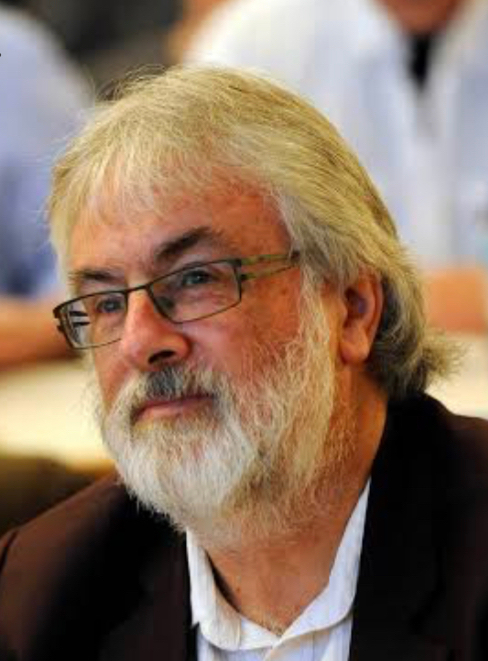In my over 30 years working in New Zealand’s health system I never came across the expression ‘rip cord’ even from the most pretentious jargonistic management consultants. However, it has now appeared on the lips and keyboards at the crisis ridden Canterbury District Health Board.
Meanings of ‘rip cord’
‘Rip cord’ as two separate words means the cord which opens the parachute in order to descend rapidly. The implication is that the parachute contains the health services that CDHB is being pressured by the Ministry of Health to jettison in order to reduce CDHB’s operational deficit. Ironically, this deficit is primarily due to the post-earthquake major capital works managed by the same Ministry.
It may be that rip cord is a literacy error (typo for those of a more generous disposition than me) and is one word only. In this case the word is associated with long-lasting pest control such as for ants, borer, cockroaches, flies, fleas, slaters, spiders and mosquitoes. This would be a vivid way of describing those pesty managers and health professionals who inconveniently but courageously believed that the purpose of the DHB was to serve its defined population. To make such a literacy error doesn’t surprise me given those who are driving rip cording.
Leadership cabal
Health Minister Chris Hipkins has disingenuously claimed that CDHB now has a new senior management leadership team implying that things are back to normal and there is nothing for Cantabrians to worry about.
In fact, what CDHB now has is a temporary decent but relatively inexperienced chief executive from a DHB – Nelson Marlborough – much smaller than Canterbury (who will soon be replaced by a more inexperienced temporary chief executive whose career prospects are shaped by being in the armpit of controversial crown monitor Lester Levy) and others who are acting up in the senior management roles.
The Minister is correct in one sense, however. CDHB has an in effect new senior leadership cabal comprising both the politically appointed Lester Levy (crown monitor) and John Hansen (Board Chair) along with Director-General Ashley Bloomfield through his Health Ministry. Cabals comprise a small group of people united by a common design and often functioning with a level of intrigue. It appears that EY consultants can also be thrown into the cabal mix but that’s a subject for another blog.
Meanwhile the ‘new senior management team’ are well-meaning people required to do what they are told. They are not required to provide advice that the cabal doesn’t want to hear. After all, to do so would not be in the interests of employment security, let alone career enhancement.
Rip cording in action
Prior to the ill-chosen rip cord spin but after the leadership coup in Canterbury, the first threats to healthcare due to Ministry enforced funding cuts were the provision of child health services in the new acute services block (Hagley) and the pain management service.
As reported in the Christchurch Press, these rip cording threats are misleadingly described as ‘discretionary’ services. The cabal’s definition of ‘discretionary’ includes help for low-income chronically ill people to access general practitioner care, medical care for victims of sexual assault, a cardio-respiratory support service, a primary care service for people who might otherwise be admitted to hospital, and community health education.
There is nothing discretionary about these threatened cuts unless one considers deny of access to essential care and treatment to be discretionary. The chief executive of Christchurch’s primary health organisation Pegasus Health, Vince Barry, is well-placed to assess this. He is unusual in that some years ago, prior to taking up this role, he was an experienced senior health manager in CDHB. Not many have this broader health management experience.
Aside from appropriately describing the ‘rip cord’ phrase as being in “poor taste”, he made what should have been self-obvious to the drivers of ‘rip cord’ that cutting health services doesn’t mean that the patient needs disappear. They reappear somewhere else in the system in a more serious and expensive state.
Cutting a service that enables GPs to look after seriously sick patients, for example, means that, if they don’t die, they will end up in the hospital clogging up an already overstretched emergency department on route to blocking beds in the wards.
Health Minister Hipkins is not responsible for causing Canterbury’s health crisis. This was well underway before he took over the portfolio. But he is responsible for fixing it. He needs to front up and provide firm principled leadership. He can’t leave the current debacle to further deteriorate. If he won’t front up then he should consider his own parachute from the portfolio with or without a rip cord.



 Howard Davis: NZSQ Inaugurates Wellington Chamber Music’s New Season
Howard Davis: NZSQ Inaugurates Wellington Chamber Music’s New Season Gordon Campbell: On The Trump Upside, And Peters Persecution Of Trans People
Gordon Campbell: On The Trump Upside, And Peters Persecution Of Trans People Binoy Kampmark: Yale, Ben-Gvir and Banning Palestinian Groups
Binoy Kampmark: Yale, Ben-Gvir and Banning Palestinian Groups Ramzy Baroud: The Myth Of Conquest - Why Gaza Will Never Be Subdued By Israel
Ramzy Baroud: The Myth Of Conquest - Why Gaza Will Never Be Subdued By Israel Binoy Kampmark: Fallibility, Dirty Wars And Pope Francis I
Binoy Kampmark: Fallibility, Dirty Wars And Pope Francis I Peter Dunne: Dunne's Weekly - An Issue No-one Can Afford To Lose
Peter Dunne: Dunne's Weekly - An Issue No-one Can Afford To Lose